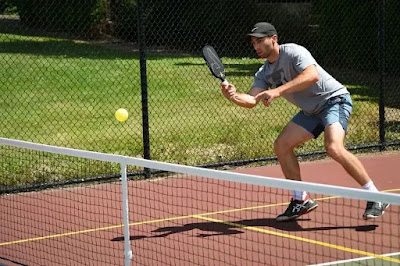Best thing to do if your Snowboard is too Stiff
What To Do if Your Snowboard Is Too Stiff
 |
| What To Do if Your Snowboard Is Too Stiff |
It's not uncommon to hear a novice snowboarder exclaim, "My snowboard is too stiff!" That's a real issue because the stiffness of the snowboard affects the overall riding experience because it determines the maneuvers that can be performed. What can you do if you're experiencing the same issue?
Increase your riding frequency if your snowboard is too stiff. This will aid in breaking in the snowboard. Before each ride, you should also hop from the nose to the tailboard several times. If both options fail, consider purchasing a new board with the appropriate flex rating for you.
The rest of this article will go over everything you need to know about dealing with a stiff snowboard in greater depth. You'll also learn about flexibility ratings, why they're important, and how to select the best one for you.
Why Do You Need a Non-Stiff Snowboard?
Stiff snowboards appear to be a no-brainer because they absorb heavy landings much more easily than softer options. The stiffness, however, should be within an acceptable range for your riding style (more on that later).
If you choose a snowboard that is too stiff for your riding style, you will have difficulty initiating or completing maneuvers. Trying to force the situation may result in falls and injuries.
Best thing to Do If Your Snowboard Is Too much Stiff?
If your snowboard is too stiff, you can bend it before each ride, ride more often, or choose a board with a different flex rating.
We'll go over each option in greater detail so you know what to do the next time your snowboard becomes too stiff.
Before each ride, bend the snowboard.
The longitudinal flex of your snowboard could be the source of the stiffness. Bending it can help to soften the board and make it less stiff. Follow the steps below to accomplish this:
- Attach the bindings to your legs.
- Then hop back and forth from the board's nose to the tail.
- After a few hops, you can loosen the board slightly.
However, you should only do this when you're out on the snow to avoid scuffing up the board or leaving wax on surfaces unintentionally.
Boost Your Riding Frequency
Stretching your board's longitudinal flex before each ride, combined with riding on the board more frequently, can make the board less stiff. The board becomes more flexible as riding frequency increases.
It has a longer and firmer board; you can achieve the same level of flexibility on a shorter board by simply using it more frequently. After a week of using the board daily, you should begin to see results.
Select a Board with a Varying Flex Rating
The flexibility of a snowboard is determined by a number of factors. This includes your riding style, weight, and level of skill. If your board is too stiff and you can't fix it with any of the hacks we discussed earlier, you've probably chosen the wrong flex rating for you.
Consider getting a new board that better fits your style by selecting the appropriate flex rating. That is the most straightforward way to ensure a pleasurable riding experience.
In the following section, we'll go over how to make this decision.
Choosing the Right Flex Rating for Your Snowboard
As I previously stated, your snowboard is too stiff because you chose a board with the incorrect flex rating for your riding style. The flex rating of your snowboard describes its flexibility. The boards vary greatly because they are all designed with different snowboarding demographics in mind.
To make the best decision, you must first understand flex ratings and how manufacturers classify a board.
Flex Ratings Explained
In a snowboard, there are two main types of flex ratings:
Longitudinal Flexibility
This refers to the snowboard's flexibility from nose to tail. When discussing the flex of aboard, this is the primary metric in focus. Manufacturers refer to the longitudinal flex when they provide a flex rating.
In addition, longitudinal flex can be continuous or progressive. If the board has progressive flex, it means that the flex around the nose, center, and tail will vary from one part to the next. Continuous flex refers to a consistent flex from the bindings to the tail of the board.
The approach will be determined by who the manufacturer designed the board for. More information is provided below.
Torsional Flexibility
This is the flex from one edge to the other across the width. Most snowboarders do not consider flex when selecting a board. Even if they wanted to, they wouldn't be able to because manufacturers don't list official torsional flex ratings for a board.
Some argue that this flex is important because sharper turns and spins are easier to execute with soft torsional flex. Edge-hold will likely be improved if the torsional flex is stiffer. As a result, you can't completely dismiss this metric.
Common Flex Ratings and What They Mean
When considering flex ratings, keep in mind that there is no standardized scale that manufacturers can use. As a result, what one manufacturer considers "very stiff flex" may be considered "stiff flex" by another.
Because of the numerous minute details that go into making a snowboard, it is difficult to develop a generalized system. Flex ratings, on the other hand, are denoted by numbers on a 1-10 scale.
This is what the numbers mean if you see a flex rating displayed from 1 to 10:
1-2: soft
3-4: medium-soft
5-6: medium
7-8: medium stiff
9-10: stiff
Some manufacturers may not use numbers and instead rate their boards on a scale of soft to stiff. Others use numbers, but in a slightly different order than what we have above. As a result, you can find ratings where the numbers represent the following:
1-2: soft
3-5: medium
6-8: stiff
9-10: very stiff
How to Select the Best Flex Rating for You
Best Flex Ratings and Snowboard Styles
Freestyle or Park Riding
Free Riding
All-Mountain Riding
Body Weight and Snowboarding Ability
Skill in Snowboarding
Body Weight
- If you're on the heavier side of the scale or athletic, go for the higher end of the flex range for riding style.
- If you aren't athletic, you should stick to the bottom of the scale for your style.
Height and weight in relation to Snowboard Size
Tips for Buying the Perfect and Good Snowboard
Stick to well-known brands
- Nitro
- GNU
- Ride
- Salomons
- Rossignol
- Rome SDS
- Capita
- Arbor
- Burton
- Lib Tech





